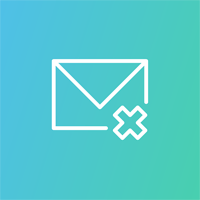Optimizing the Email Experience

Most digital enterprises routinely underperform in one very important digital area - email.
What many brands don't realize is that email can be the connective tissue between all marketing and customer experience initiatives. Those who avoid its regular use, however, do so at their own peril.
If enterprises are serious about 'Net success, then now is the time to optimize the email experience. In this month's feature article, let's take a look at the email ecosystem and help prepare your brand for a better response from future campaigns.
Making The Case for Email Today
One of the many reasons that email has become such a virtual workhorse for brands is because it is possible to customize each and every experience and know an incredible amount about the performance of campaigns down to the user level. Not only do we know what type of content is driving action and when the optimal moments are to generate engagement, but we also know how users are accessing the emails that brands send, providing a powerful opportunity to optimize the entire experience (and improve) in the future.
In a report released by VentureBeat last year, 84 percent of marketers said email is important or critically important for loyalty. Similar high percentages show how important it is for sales, retaining customers and lead generation. The result? Fifty percent of marketers anticipated their company's spend on email to increase during 2015 according to the Direct Marketing Association.
If marketers need more convincing that email is a vital marketing channel, which provides access to numerous data points that highlight the power of email and the investment marketers are making in its optimization.
The potential of email, however, often outweighs the performance. Recent MailChimp research revealed that open rates vary between 17 and 26 percent, with click-through rates ranging anywhere from 1.3 percent for restaurants to 5.36 percent for those in the hobby industry (everyone else fell between that range with the average click through-rates somewhere between 2.5 and 3.5 percent). That all amounts to far less activity with brand messaging than many senders anticipate. Like other promotional channels online (search, social, etc.), of course, email is evolving and it benefits marketers to know how if they want to better optimize its use.
The Trend Toward Mobile
The one trend that dominates the headlines when it comes to email (as well as other channels) is, you guessed it, mobile. Over the course of 2015, according to the Litmus State of Email Report for 2016, mobile opens increased by 17 percent and now represent 55 percent of email opens (iPhone leads with 33 percent of mobile opens, with Android at 10 percent). Web-based email opens decreased 13 percent consequently, while desktop decreased by 17 percent.
As any good Web professional will attest, that means concentrating efforts on design and the experience that results. The nuances of mobile email design can be complex. With so many different mobile devices, it becomes essential to follow some best practices to ensure you start out on the right virtual foot (discover some key considerations for mobile email design).
Once the case has been made for email, it's time for brands to turn their collective attention to the more serious matters of email optimization.
Forming a Strong Technical Foundation
When it comes to email, reputation is everything. The better that senders treat their recipients, and the more trustworthy they position themselves before the Internet service providers (ISPs), the better chance they will have to see their messages arrive at their destination - the inbox. And the best part is that by following just a few simple practices and understanding how it (delivery) all works, optimization and improvement of email campaign is most certainly achievable.
If senders want recipients to open their email, they have to get past the spam filters first. That means avoiding some practices and adopting others (primarily related to design as well as reputation). Spam filters are somewhat rudimentary but use a long list of criteria when making their assessment (the spam score). If the score exceeds a certain threshold, emails get flagged as spam and end up in the junk folder.
Optimizing Deliverability
New research from Return Path reveals that just 79 percent of legitimate commercial emails worldwide reach their intended target with the remaining ending up in spam folders or blocked entirely.
Email marketers in the U.S. are not exempt, experiencing below-average inbox placement, with just 73 percent of messages reaching subscribers - six percentage points below the global average. U.S. inbox placement was relatively strong in Q2 and Q3 2015 (78 percent and 80 percent, respectively), however, but dropped below 70 percent in the first half of 2016. Brands are waking up to deliverability issues and solutions are emerging to help curtail the problem.
Data solutions provider Return Path, for example, announced the next generation of its "Certification" solution, which will enable email senders to join a certified whitelist based on their sending domain's reputation. According to Return Path, Certification provides an average lift of 18 percent in overall placement. While Return Path's existing IP address-based whitelist caters to large enterprise senders, the new Domain Certification solution will extend the benefits of Certification to small and mid-sized senders on shared IP addresses.
Adding Domain Certification will also benefit senders that already have certified IP addresses by giving them greater flexibility to monitor their email streams. With a strong technical foundation established, enterprises should turn their attention to other aspects of optimizing the email experience.
The Art of Acquisition
It doesn't take a digital genius to see that email marketing remains one of the most powerful and effective ways to increase any number of important indicators of performance - from unique visits to revenue and ultimately growth. The benefits of having a large email list are immense of course, but getting to that point is challenging for those just starting out.
Many simply don't really realize the investment of effort and creativity (not to mention time and money) required to grow an email list and what it takes to acquire the email addresses of those potentially interested in a brand and its products and services. It's not just the cost of sending but all the digital bells and whistles as well, such as the variety of testing and optimization solutions or personalization features that can be added on.
That makes it more important than ever to optimize what can be controlled - from the forms being used, to the incentives for subscribing as well as determining what headlines and calls to action work best. Let's explore some of the acquisition methods being used by 'Net professionals today.
EXIT-INTENT POPUPS
A majority of first-time visitors will exit a website after their initial visit. By using an exit-intent popup, marketers have one final chance to make their case for the visitor to subscribe. While many consider them over-used and annoying they do work quite well as they are true attention grabbers.
The trick with exit-intent pop-ups is to ensure that the benefit being provided is clear and concise, worthy of the attention of readers. For some inspiration, visit wsm.co/5notsofast to find some well executed exit-intent popups.
TIME-TRIGGERED LIGHTBOX
Interrupting a user as they are in the process of leaving a site may not always be the best fit depending on an audience. Those looking for an effective alternative may want to consider a lightbox with controls over when the popup should display.
For example, perhaps a marketer could elect to trigger a lightbox with a subscription offer when the user is on a site for a specified amount of time or upon arrival at the second page of their session. It's less intrusive (as the user has shown some level of interest) and can be as effective as any other means to acquire subscribers.
EMBEDDED FORMS
Perhaps the most common method to acquire subscribers is that of the embedded form. All email marketing service providers (as well as marketing automation and customer relationship management systems) provide embedded forms to help their clients acquire subscribers, but even the best executed forms can fall short in terms of catching users' attention.
The best practice is to use a form with high contrast to the background of the site (so that it stands out) and use a catchy and compelling headline to capture interest.
STATIC/STICKY FOOTER/HEADER BARS
One of the newer approaches to email subscriber acquisition is to show the subscription area in a fixed (static) position so that it is always in the user's field of vision. Subscription bars can be placed at the bottom or top of a Web page and perform quite well on average depending on the size, location and other factors.
Adding subscribers and recipients is important, but planning for success is what will matter most in the future.
Long-Term Email Success Strategies
Email is a powerful tool in the digital marketing toolbox, but like most other promotional mechanisms, it can be misused and abused by brands. With an eye to the future, however, and a commitment to ensuring a useful and positive experience for recipients (the audience of users being sent email) it is possible to ensure a greater level of success over the long term. Let's take a look at a few of the "best practices" that should be leveraged by email marketers and the enterprises that employ them.
DOUBLE OPT-IN
It's the simplest way to ensure those who marketers are sending to actually did request communication. Double opt-in is essentially a two-step process where a user completes a signup form and then receives an email that includes a link to confirm their subscription to the list. Using a double opt-in prevents marketers from adding bogus subscribers to their list, which can have a positive impact on deliverability and overall campaign performance.
LISTS
Some "experts" will argue that it is never a good idea to "buy" a list, but others will suggest this belief is somewhat naive. It can take years to build a substantial list. If marketers are under pressure to grow, sometimes the only way to do that is to get a head start. Lists often contain out-of-date and incomplete information, however, so brands need to develop a strategy that will weed out these users after the first or second send.
HONOR UNSUBSCRIBES
The beauty of technology, and email tech specifically, is that most of the work can be automated. It's not necessary, for example, to remove each and every user manually from a company's database as most email service providers offer the ability to manage those that want to unsubscribe. Many senders ignore this step as they wrongfully believe that a bigger list is better, but not honoring unsubscribe request can damage sender reputation and wreak havoc on performance metrics.
ELIMINATE INACTIVES
Perhaps the most difficult process when it comes to email marketing is when the time comes to remove inactive list recipients. If a user has not opened an email from a brand over a specific period of time, it's unlikely they will in the future. It may be shocking to learn, but it is likely that well-over 50 percent of the average list falls into this category, which can present a number of problems; not only are companies likely paying to distribute email to those inactive recipients but ISPs keep a close watch on bounces and open rates. Brands should do themselves a digital favor and eliminate recipients who have been inactive for six months (no open, no clicks, etc.).
It's not easy to follow these rules, but they do pay off in the form of better performance and stronger perception of the sender in the future. That's reason enough to be in compliance with these best practices.
Up to this point, you've learned why email is important and many things you should avoid (or simply not engage in). Email, however, is a creative practice as much as it is technical and strategic and as a result, brands must also concentrate their attention on the content experience.
Content Emphasis
The question most marketers have about their email initiatives is what content resonates most with recipients. The answer is relatively simple - the content that motivates them to take action. Let's take a look at how enterprises can emphasize content and keep performance metrics rising.
Develop Hyper-Personalized Content
Use demographic and location data and target offers based on past purchase behavior. Doing so will encourage readers to open messages, click through to Web pages and convert.
Test Content Approaches
Use A/B and multivariate testing to determine which subject lines, content and images are working and worth using for future email campaigns.
Get Experimental
Consider the addition of video, polls or emojis in the subject line and measure the engagement that results.
Cross-Promote
Email is just one marketing channel so make sure to promote the availability of exclusive content within email on search engines and social media. Clearly, content is everywhere, and it's getting personal in unique ways. Personalized email provider Bluecore and user-generated content (UGC) collection and management platform Olapic, for example, have partnered to help email marketers deploy more "authentic and personalized" campaigns. The partnership can enable marketers to include this real-time, relevant, socially sourced content into their campaigns without any significant investment of time or resources.
Billions of user-generated photos are posted and viewed across social networks each day, and Olapic's platform will help Bluecore senders streamline the collection, curation and showcasing of that potentially engaging content to use in their campaigns, including those triggered by certain behaviors.
The Practical Side of Retargeting
It is the responsibility of enterprises leveraging a practice such as retargeting to provide a path for these users (and users classified under any identified buyer persona) that avoids potential resistance points - like failures in identifying a buyer's priorities, decision criteria and success factors - and supplements and improves the overall digital experience to achieve the conversion. Email retargeting can be complex, of course, so consider a rules-driven, multi-touch approach that speaks to each user's unique situation and desired experience.
+ Establish a rule that if a shopper fitting a specific buyer persona has not converted in the past month, they will be served an email promoting new information or products from their most frequently visited categories.
+ On the second interaction, present content/offers on the homepage (or sidebars, footers or headers throughout the digital experience) highlighting recently viewed products, sorting products based on the shopper's historical product price range or displaying info popular with similar users.
+ On the third touch, highlight the cart contents and remind the shopper of any promotion he or she might be eligible for, such as free shipping.
Even with the most powerful machine learning and artificial intelligence tools ever developed at their disposal, however, it is often still not enough to enable the majority of enterprises to optimize the digital experience if there is no formal plan in place first to surmount any potential challenges that arise on the user's path to conversion.
The Email Evolution
In much the same way that consumers are shifting their email consumption patterns, the email technology industry is evolving as well - and it is very much for the better.
Email and online marketing platform GetResponse, for example, recently announced a beta release of its own marketing automation solution. Marketers will be able to build automated campaigns using simple "if, then" logic, tag and score leads to build audience profiles, and access visual workflows in order to view the entire communications path, and even leverage tools to track and respond to customers' e-commerce journeys.
Email service providers are becoming more than just platforms marketers use to hit "send" on their campaigns in order to communicate with their audience. Email marketing provider Campaign Monitor, for example, recently unveiled a new App Store and certified partner program, which includes tools and resources for partners and developers to build apps that work with Campaign Monitor including APIs, guidance, certifications and co-marketing opportunities.
There is a seemingly endless lineup of technologies that marketers use to execute and track their email marketing efforts, and initiatives like Campaign Monitor's App Store provide the best of the best to simplify and optimize the technology stack and this essential marketing channel for senders.
Who's Ready to Optimize?
Email is an essential practice for today's digital brands. By establishing a strong technical foundation, concentrating on the user experience and continually looking for opportunities to improve, brands can dramatically accelerate their 'Net success.










